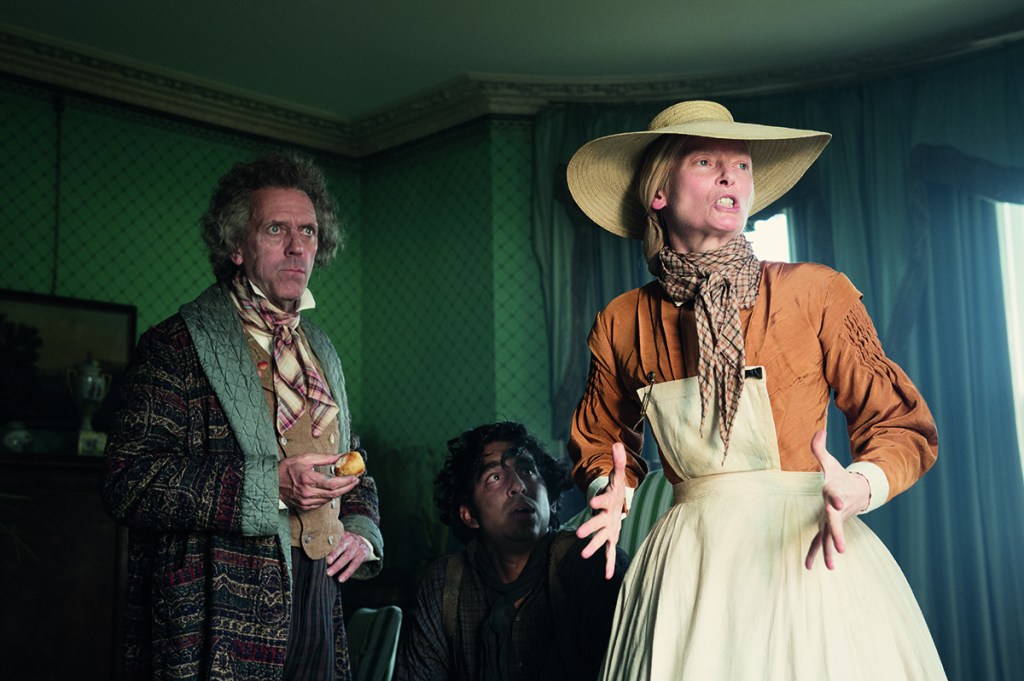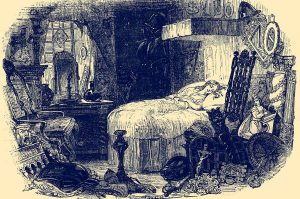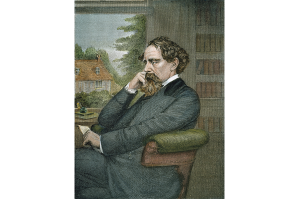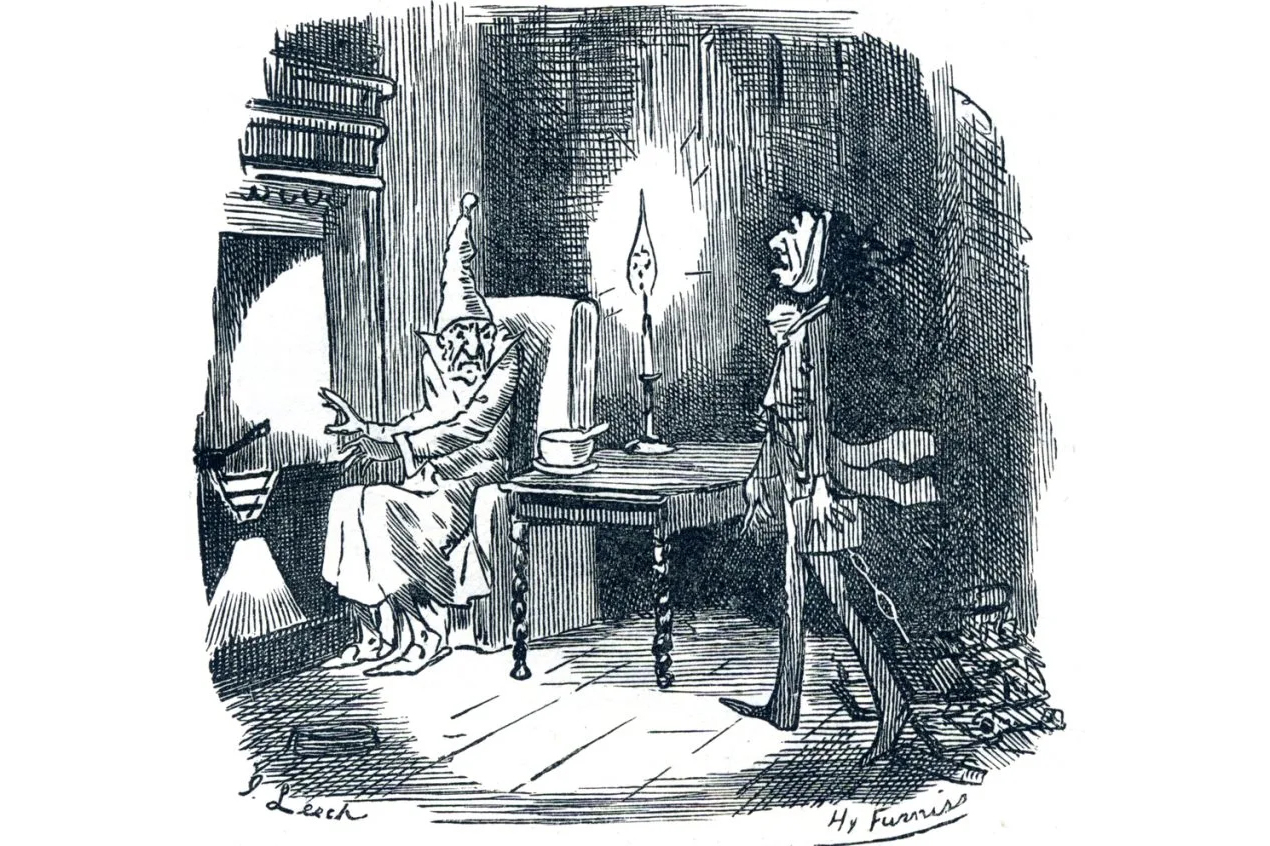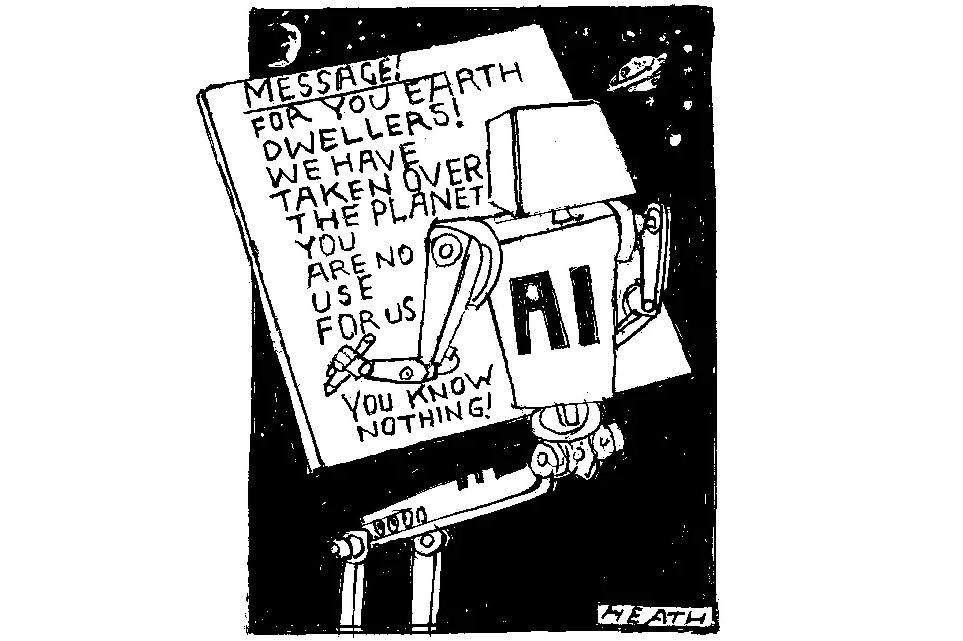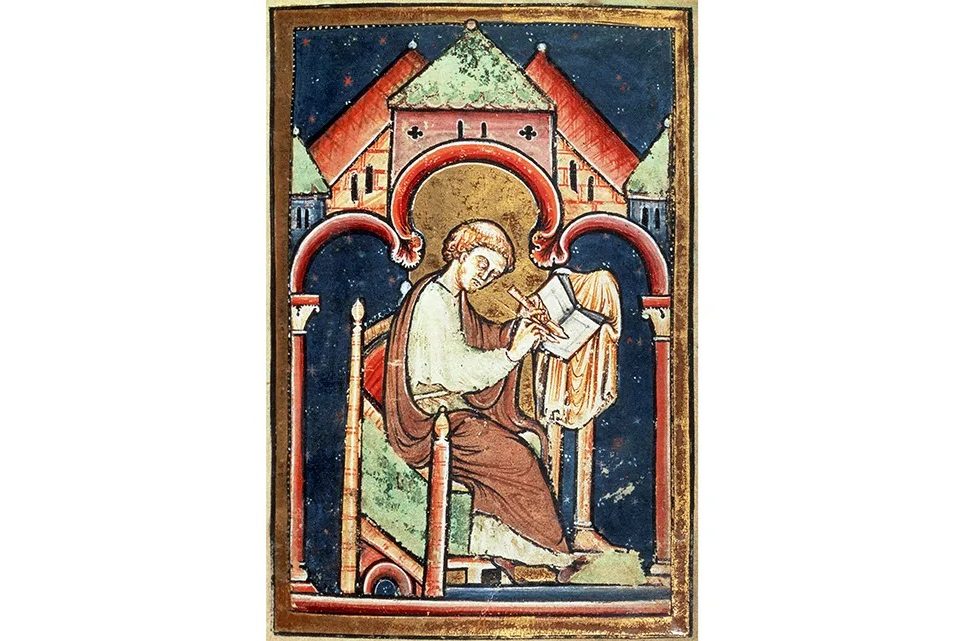A true adaptation of David Copperfield is neither possible nor even desirable. It would last as long as it takes to read the novel, say, two weeks. The principal cast would number in the dozens, and the extras — the clerks, lawyers, policemen, landlords, cooks, chimney sweeps, pickpockets, sailors, ministers, soldiers, beggars, porters, carters, fishermen, coachmen, pimps, gypsies and whores — in the hundreds of thousands. Replicating the cellars, garrets, galleries, museums, bridges, pubs, factories, shipyards, docks, scaffolds and debtors’ prisons of Victorian London would require construction on a Himalayan scale. At the end of what can only be described as an ordeal, the viewer would, like Mr Wemmick’s ‘aged P’ in Great Expectations, be forced to raise the drawbridge and retire to the comforts of home.
Worse still, Copperfield is the Goldilocks of the Dickens corpus. Not too funny, like Pickwick; not too sad, like Great Expectations with its original ending. Written almost exactly in the middle of Dickens’s career, Copperfield is considered to be just right. My ‘favorite child’, Dickens called it. ‘The most perfect of all the Dickens novels’, wrote ultra-snob Virginia Woolf. Margaret Oliphant, a novelist and astute contemporary of Dickens, thought it his ‘most able and most perfectly satisfactory work’. G.K. Chesterton swooned that Master David was ‘the best of all Dickens’s heroes’. George Gissing, a true Dickens idolator, believed that only in Copperfield does ‘the narrative move on with such full sail from first to last’. As Huckleberry Finn is to Americans, so Copperfield is to the British, only without the indelicate vernacular.
Armando Iannucci, the director of The Personal History of David Copperfield, is certainly brave. Iannucci and his regular cowriter Simon Blackwell rip the guts out of the book and do their best to save the spine. Summarizing the plot gives a sense of their task. David is born to a widowed mother, then falls afoul of his tyrannical stepfather Mr Murdstone and his iron lady of a step-aunt. Freeing himself from the squalor of Murdstone’s bottle factory, he is taken in by his Aunt Betsey and her eccentric friend Mr Dick. He befriends the indigent optimist Mr Micawber and the dashing scoundrel James Steerforth. He is smothered by the damp affections of Dora Spenlow; he ends up a successful writer, happily entombed with Agnes Wickfield in a grand house full of babies. Not to mention the Peggottys and Yarmouth, or ‘simpering’ Ham and ‘little’ Em’ly, or ‘poor’ Traddles, or ‘umble’ Uriah Heep, or Mr Creakle and his veined forehead, or Barkis, or the rooks, or the donkeys on the green, or the workbox with the picture of St Paul’s cathedral on its lid, or a hundred other things.
Iannucci and Blackwell take a chainsaw and ax to this Gothic edifice. Hacking and cutting, they rearrange the surviving blocks into a tight, snappy, upbeat romp that resembles David Copperfield in the same way that an egg resembles a chicken. The cast are the theatrical equivalent of a Full English breakfast: Dev Patel (David Copperfield), Tilda Swinton (Betsey Trotwood), Ben Whishaw (Uriah Heep), Peter Capaldi (Mr Micawber) and Hugh Laurie (Mr Dick). Patel is a joy, Swinton appropriately nutty and Laurie a perfect blend of humor and pathos. Only Whishaw, who lacks Uriah Heep’s implied sexual threat, and Capaldi, who is too scary and smart to be Micawber, are miscast.
The casting is what industry types call ‘colorblind’. That is to say the ethnicities of the characters are mixed and matched regardless of historical accuracy. So Mr Wickfield (Benedict Wong, who, as you may suspect, is of Chinese background) looks quite different from his daughter (Rosalind Eleazar, whose father is from Ghana). Steerforth (Aneurin Barnard) is close to his mother (Nikki Amuka-Bird), but not so close as to resemble her real-life Nigerian forebears. This is a political choice as much as an artistic one. The filmmakers have decreed that the screen must reflect the diversity of Victorian London: ‘It was like Manhattan in the 1920s,’ Iannucci claims, showing equal-opportunity disregard for fact as for fiction. ‘London then and London now was and is a global city. We wanted to make a city that the audience would recognize and the characters would recognize.’
Does it matter that Iannucci’s claim that Dickens’s London was like Fitzgerald’s Manhattan is false? Millions of readers all over the globe have suffered and triumphed with Copperfield, regardless of their melanin levels. It is patronizing to assume that multiethnic audiences require ‘recognition’ with multi-ethnic casts, as though they can only manage empathy when flattered. And why does this retroactive social engineering only run in one direction? The defense goes like this: David Copperfield was melanin-restricted because, like all other fictional characters, he is not a real person. Artistic license means that David Copperfield can, of course, be played by Patel, an excellent English actor born to Gujurati Hindus who immigrated to London from Kenya. But taking this license is counter-productive, because it ignores what great fiction does.
‘Dickens’s characters are real because there is no one like them,’ T.S. Eliot wrote. David Copperfield, Micawber, Heep and poor Traddles are more real than most real people. Anachronistic diversity changes the depths of the past to reflect the surface of the present. This prevents us from contacting the reality of the characters’ putative worlds. Only white people are so guilty, or so invertedly special, that their history and culture can be rearranged in this manner. Charlie Hunnam or Michael Fassbender isn’t starring in Bollywood musicals, and only black actors played the black characters in the Harriet Tubman movie. The political scientist Eric Kaufmann calls this ‘asymmetrical multiculturalism’.
There is a large ‘but’ here, and it isn’t Agnes Wickfield’s. David Copperfield abounds in doubles; its multiple inversions are probably why Dostoevsky loved it so much. David has two fathers, attends two schools, works two jobs and marries two wives. The novel is childish and knowingly skeptical, nostalgic and modern. Uriah Heep is in many ways Copperfield’s double, the failure he might have become. Copperfield was the most autobiographical of Dickens’s works, the novel, Chesterton wrote, where he pulled ‘the truth out of his own life’. The doublings reflect Dickens’s double consciousness. He wanted to be an actor but became a writer; his public persona was in conflict with the private man; he endured his wife but loved his mistress. He demanded radical change in Hard Times but damned revolution in A Tale of Two Cities and Barnaby Rudge. The eponymous adjective ‘Dickensian’, the historian Robert Tombs has pointed out, can describe both a Christmas feast and a filthy slum.
Iannucci knows this. Shrewdly, Morfydd Clark is cast as both David’s mother Clara and his wife Dora. Casting Patel as Copperfield acknowledges that split identity is as common among the children of immigrants as it is in Copperfield’s life. Iannucci, too, is the son of immigrants, and his identification with the story is as palpable as Roman Polanski’s was with his ghetto-born Oliver Twist (2005).
***
Get three months of The Spectator for just $9.99 — plus a Spectator Parker pen
***
Still, there have been far more controversial castings in the history of Dickens adaptations. When David Lean’s Oliver Twist played in the British sector of West Berlin in 1949, Jewish protesters rioted outside the cinema. Alec Guinness’s Fagin, modeled on the original caricatures by George Cruikshank, was so crudely anti-Semitic that Oliver Twist was not released in the United States until 1951, minus seven minutes of Guinness footage. Banned in Israel as anti-Semitic, Oliver Twist was also banned in Egypt — for being too sympathetic to Fagin.
Nevertheless, Lean’s savage and brooding Dickens movies remain the standard by which all others (and there have been over 400) are judged. Iannucci’s candy-colored Victoriana and cinematographer Zac Nicholson’s surreal use of slow-motion and wide-angle lenses owe more to Carol Reed’s Oliver! (1968) and spoofs like Scrooged (1988) or The Muppet Christmas Carol (1992) than they do to Lean’s gritty renderings. Iannucci’s background is in snarky, savvy comedies like Veep (2012-19) and In the Loop (2009). He handles Mr Dick’s mania better than he handles than Steerforth’s death at sea.
Nothing is sacred to Iannucci — apart from standard liberal shibboleths. In this respect, he resembles Dickens. There was barely an institution in Britain that Dickens, who rejected all honors, didn’t mock. He hated Parliament, he couldn’t stand aristocrats, he thought the civil service a joke, he lambasted churchmen, schoolmasters, Utilitarians and Malthusians. Dickens, Orwell observed, ‘attacked English institutions with a ferocity that has never been approached’. Yet he managed to do so without making himself hated, and he became a ‘national institution’ — partly because, like Iannucci, he was also a sentimental comic. Even when, as with The Personal History of David Copperfield, the results are mixed, Dickens would have loved cinema — because cinema loves him.



